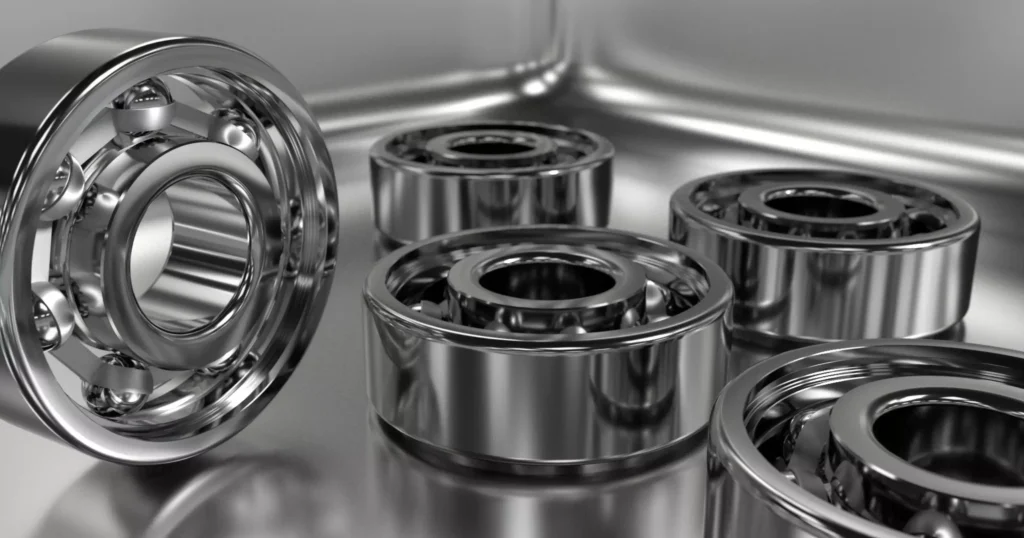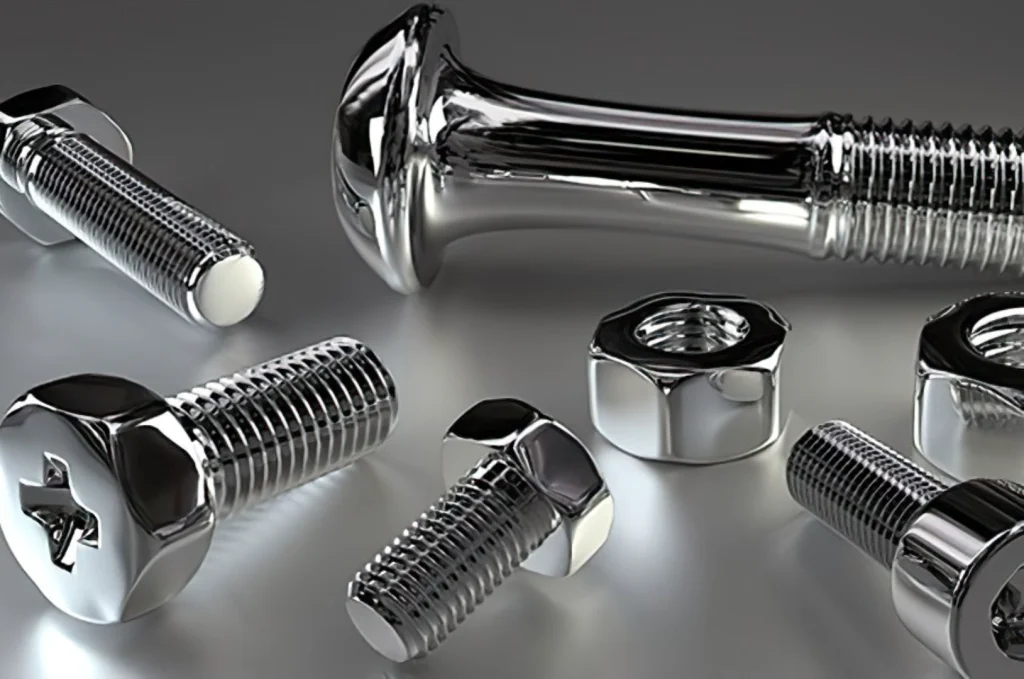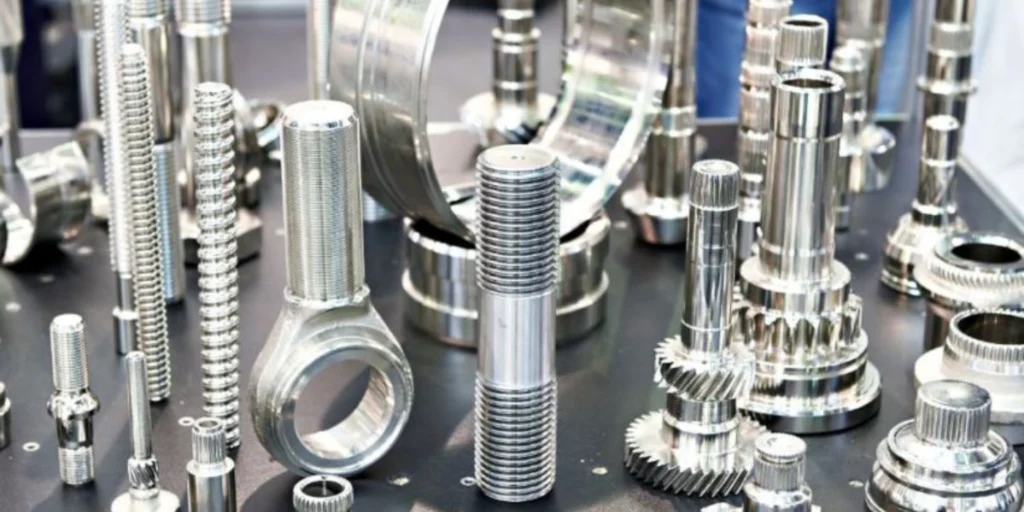Automotive & Industrial Chrome Plating | High-Quality Coatings
Section 1 Introduction
Chrome plating, known for its lustrous finish and protective properties, is a widely employed surface treatment in both the automotive and industrial sectors. This process involves electrodepositing a thin layer of chromium onto a substrate, enhancing its appearance, durability, and resistance to corrosion. From gleaming car bumpers to heavy-duty industrial machinery, chrome plating plays a vital role in improving the performance and aesthetics of countless products. In this article, we’ll delve into the details of automotive and industrial chrome plating, exploring the processes, benefits, applications, and the importance of choosing a trusted supplier like Welleshaft for high-quality coatings.
Section 2 What is Chrome Plating?
Chrome plating is an electrochemical process in which a thin layer of chromium is deposited onto a metal or plastic object. It is done to impart corrosion resistance, ease cleaning procedures, or increase surface hardness. There are two main types of chrome plating:
2.1 Decorative Chrome Plating: Also known as bright chrome, this type is primarily used for aesthetic purposes, providing a shiny, reflective finish.
2.2 Hard Chrome Plating: Also known as industrial chrome, this type is applied in thicker layers to provide wear resistance, reduce friction, and prevent corrosion.
Section 3 The Chrome Plating Process
The chrome plating process typically involves the following steps:
3.1 Cleaning: The substrate is thoroughly cleaned to remove dirt, oil, and other contaminants.
3.2 Pre-Treatment: Depending on the substrate material, pre-treatment processes like etching or activation are applied to improve adhesion.
3.3 Electroplating: The substrate is immersed in an electrolytic solution containing chromium ions and a current is passed through it, causing the chromium to deposit onto the surface.
3.4 Rinsing: After plating, the object is rinsed to remove residual chemicals.
3.5 Post-Treatment: Additional processes like polishing or sealing may be applied to enhance the coating’s appearance or performance.
Section 4 Types of Chrome Plating
|
Type |
Characteristics |
Applications |
|
Decorative Chrome Plating |
Thin, bright, reflective; primarily for aesthetics. |
Automotive trim, household appliances, plumbing fixtures. |
|
Hard Chrome Plating |
Thick, wear-resistant; enhances durability and reduces friction. |
Hydraulic cylinders, piston rings, molds, dies, bearings. |
|
Black Chrome Plating |
Dark, matte finish; offers corrosion resistance and heat absorption. |
Optical instruments, solar panels, decorative hardware. |
|
Electroless Chrome Plating |
Uniform coating thickness, regardless of part geometry; good for complex shapes. |
Electronic components, medical devices, aerospace parts. |
|
Trivalent Chrome Plating |
Environmentally friendly alternative to hexavalent chrome; similar appearance and properties. |
Automotive components, decorative hardware, consumer goods. |

Section 5 Benefits of Chrome Plating
Chrome plating offers a multitude of benefits, making it a popular choice for various applications:
5.1 Corrosion Resistance: Chromium forms a passive oxide layer that protects the underlying material from corrosion.
5.2 Enhanced Durability: Hard chrome plating significantly increases the wear resistance of components, extending their lifespan.
5.3 Improved Aesthetics: Decorative chrome plating provides a shiny, attractive finish that enhances the appearance of products.
5.4 Reduced Friction: Chrome plating can reduce friction between moving parts, improving efficiency and reducing wear.
5.5 Ease of Cleaning: Chrome-plated surfaces are smooth and non-porous, making them easy to clean and maintain.
5.6 Increased Hardness: Hard chrome plating increases the surface hardness of the substrate, making it more resistant to scratches and dents.
Section 6 Automotive Chrome Plating Applications
The automotive industry relies heavily on chrome plating for both functional and aesthetic purposes:
6.1 Bumpers: Chrome-plated bumpers provide a shiny, protective barrier against impacts and corrosion.
6.2 Wheels: Chrome-plated wheels enhance the appearance of vehicles and offer corrosion resistance.
6.3 Trim: Chrome trim adds a touch of elegance to cars, highlighting body lines and features.
6.4 Engine Components: Chrome plating can improve the wear resistance and performance of engine components like piston rings and valves.
6.5 Exhaust Systems: Chrome plating provides corrosion resistance to exhaust systems, extending their lifespan.
Section 7 Industrial Chrome Plating Applications
Industrial chrome plating is used in a wide range of industries to improve the performance and durability of components:
7.1 Hydraulic Cylinders: Hard chrome plating protects hydraulic cylinder rods from wear and corrosion, ensuring reliable operation.
7.2 Piston Rings: Chrome-plated piston rings reduce friction and wear, improving engine efficiency and lifespan.
7.3 Molds and Dies: Chrome plating enhances the wear resistance and release properties of molds and dies, improving production efficiency.
7.4 Bearings: Chrome-plated bearings offer reduced friction and increased wear resistance, extending their service life.
7.5 Cutting Tools: Chrome plating can improve the hardness and wear resistance of cutting tools, increasing their cutting efficiency.
7.6 Printing Rollers: Chrome plating provides a smooth, durable surface for printing rollers, ensuring high-quality print results.
7.7 Aerospace Components: Chrome plating is used on aerospace components to provide corrosion resistance, wear resistance, and improved surface properties.
Section 8 Environmental Considerations
Traditional chrome plating processes, particularly those using hexavalent chromium, can have negative environmental impacts. However, advancements in technology have led to the development of more environmentally friendly alternatives, such as trivalent chrome plating and electroless nickel plating. These alternatives offer similar performance characteristics with reduced environmental risks.

Section 9 The Importance of Choosing a Trusted Supplier
The quality of chrome plating depends heavily on the expertise and experience of the supplier. Choosing a reputable and trusted supplier is essential to ensure high-quality coatings that meet your specific requirements.
Section 10 Selecting the Right Chrome Plating Process
Choosing the right chrome plating process is crucial for achieving the desired results. Factors to consider include:
10.1 Application: What is the intended use of the component?
10.2 Substrate Material: What material is being plated?
10.3 Required Thickness: How thick should the chrome layer be?
10.4 Desired Finish: What type of finish is required (e.g., bright, matte, black)?
10.5 Environmental Considerations: Are there any environmental restrictions on the use of certain plating processes?
Consulting with a chrome plating expert can help you determine the best process for your specific needs.
Section 11 Why Welleshaft Stands Out as Your Premier Chrome Plating Partner
When it comes to automotive and industrial chrome plating, Welleshaft emerges as a trusted global supplier and contract manufacturer renowned for its commitment to excellence and innovative solutions. Here’s why Welleshaft should be your preferred partner:
11.1 Unwavering Quality Standards: Welleshaft adheres to the strictest quality control measures throughout the entire chrome plating process, ensuring that every component meets or exceeds industry standards.
11.2 Advanced Technology and Expertise: Leveraging cutting-edge electroplating technology and a team of highly skilled engineers and technicians, Welleshaft delivers consistently superior results.
11.3 Customized Solutions: Welleshaft understands that every project is unique, and offers tailored chrome plating solutions to meet specific needs, whether it’s decorative, hard chrome, or other specialized coatings.
11.4 Commitment to Sustainability: Embracing environmentally responsible practices, Welleshaft actively promotes and utilizes trivalent chrome plating and other eco-friendly alternatives whenever feasible, minimizing the environmental impact.
11.5 Global Reach and Reliable Supply Chain: With a well-established global network and robust supply chain, Welleshaft ensures timely delivery and competitive pricing, regardless of project location or complexity.
11.6 Comprehensive Services: Welleshaft goes beyond just chrome plating, offering a wide range of complementary services, including surface preparation, machining, heat treatment, and assembly, providing customers with a one-stop solution for all their manufacturing needs.
Conclusion
Chrome plating is a versatile and valuable surface treatment that enhances the appearance, durability, and performance of components in the automotive and industrial sectors. By understanding the different types of chrome plating, the process involved, and the benefits it offers, you can make informed decisions about its application. When selecting a chrome plating supplier, choosing a trusted and experienced partner like Welleshaft is essential to ensure high-quality coatings that meet your specific requirements and deliver long-lasting performance. With their dedication to quality, advanced technology, and commitment to sustainability, Welleshaft is well-positioned to be your premier chrome plating partner.

